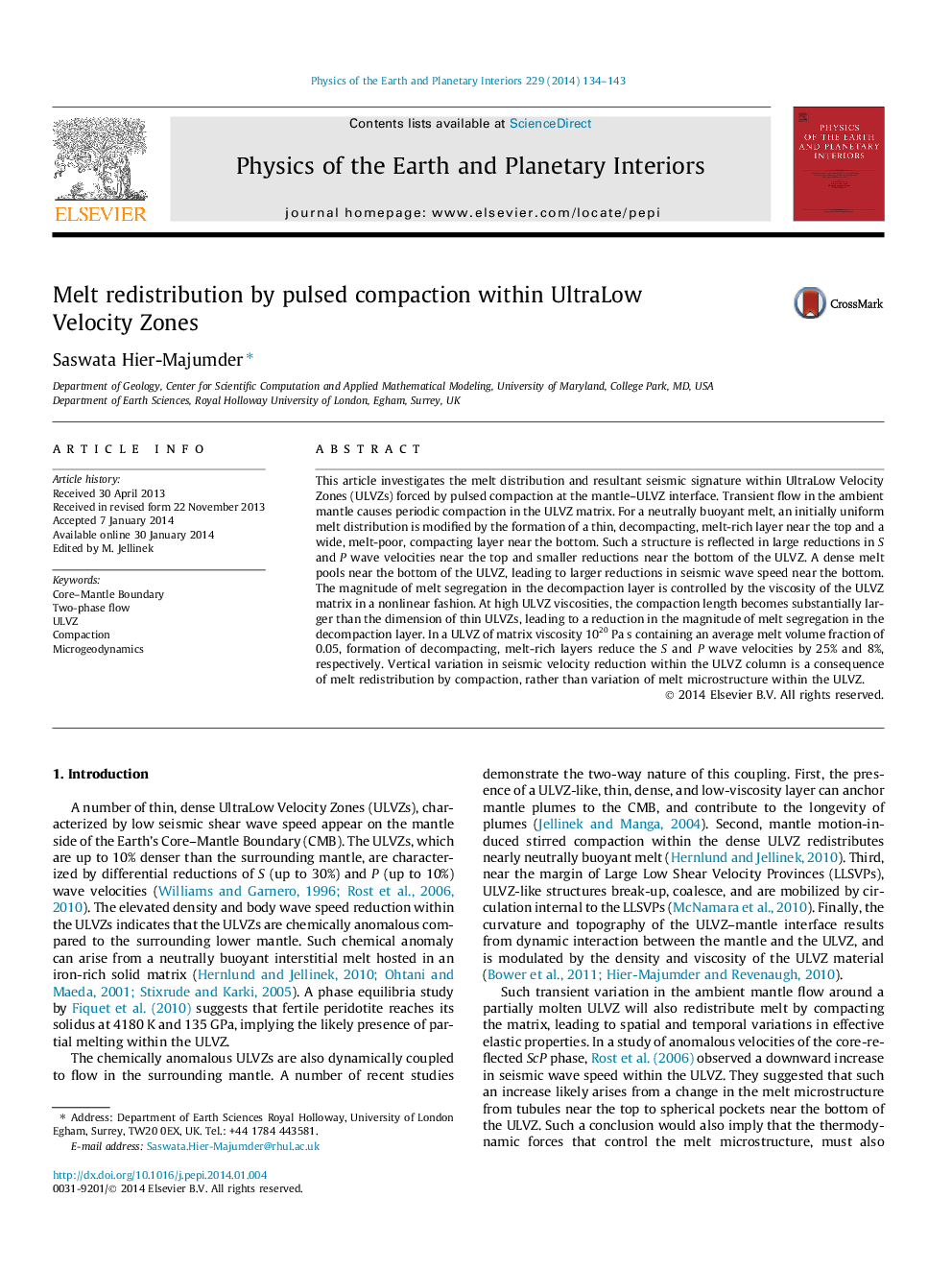| Article ID | Journal | Published Year | Pages | File Type |
|---|---|---|---|---|
| 4741635 | Physics of the Earth and Planetary Interiors | 2014 | 10 Pages |
Abstract
This article investigates the melt distribution and resultant seismic signature within UltraLow Velocity Zones (ULVZs) forced by pulsed compaction at the mantle-ULVZ interface. Transient flow in the ambient mantle causes periodic compaction in the ULVZ matrix. For a neutrally buoyant melt, an initially uniform melt distribution is modified by the formation of a thin, decompacting, melt-rich layer near the top and a wide, melt-poor, compacting layer near the bottom. Such a structure is reflected in large reductions in S and P wave velocities near the top and smaller reductions near the bottom of the ULVZ. A dense melt pools near the bottom of the ULVZ, leading to larger reductions in seismic wave speed near the bottom. The magnitude of melt segregation in the decompaction layer is controlled by the viscosity of the ULVZ matrix in a nonlinear fashion. At high ULVZ viscosities, the compaction length becomes substantially larger than the dimension of thin ULVZs, leading to a reduction in the magnitude of melt segregation in the decompaction layer. In a ULVZ of matrix viscosity 1020 Pa s containing an average melt volume fraction of 0.05, formation of decompacting, melt-rich layers reduce the S and P wave velocities by 25% and 8%, respectively. Vertical variation in seismic velocity reduction within the ULVZ column is a consequence of melt redistribution by compaction, rather than variation of melt microstructure within the ULVZ.
Related Topics
Physical Sciences and Engineering
Earth and Planetary Sciences
Geophysics
Authors
Saswata Hier-Majumder,
